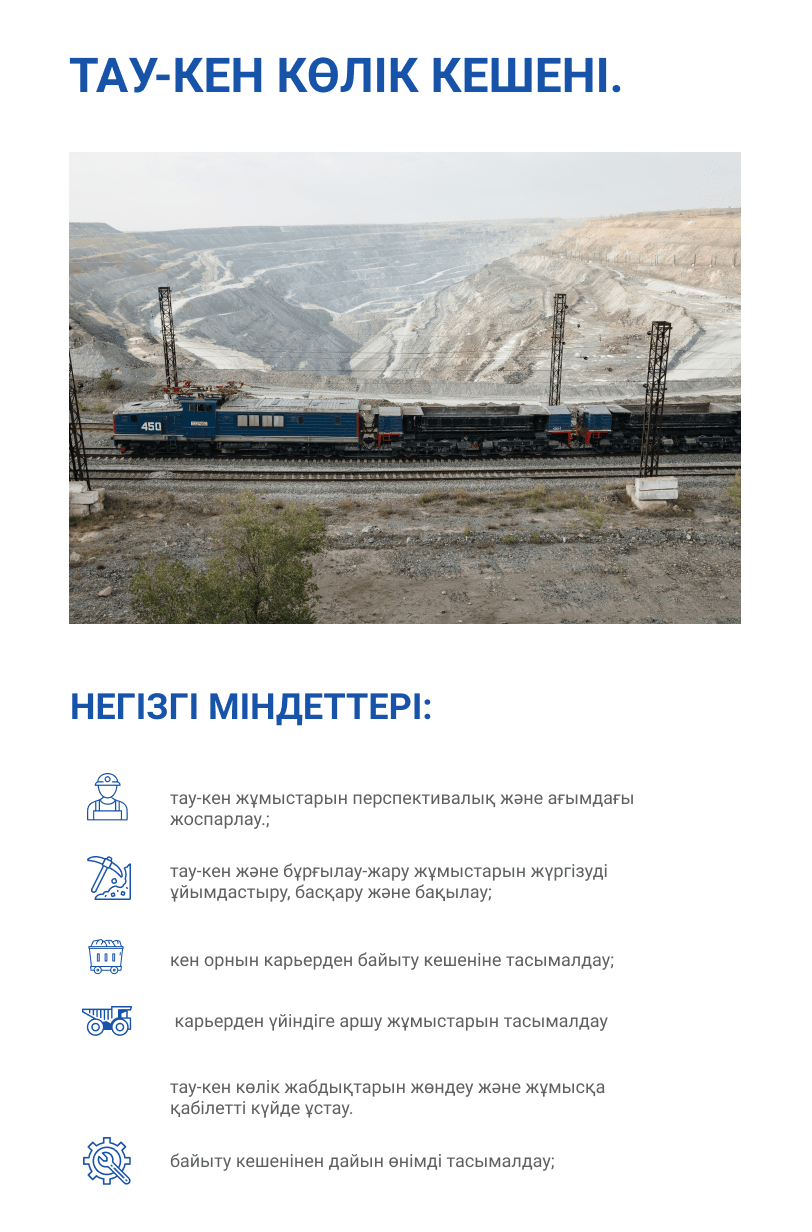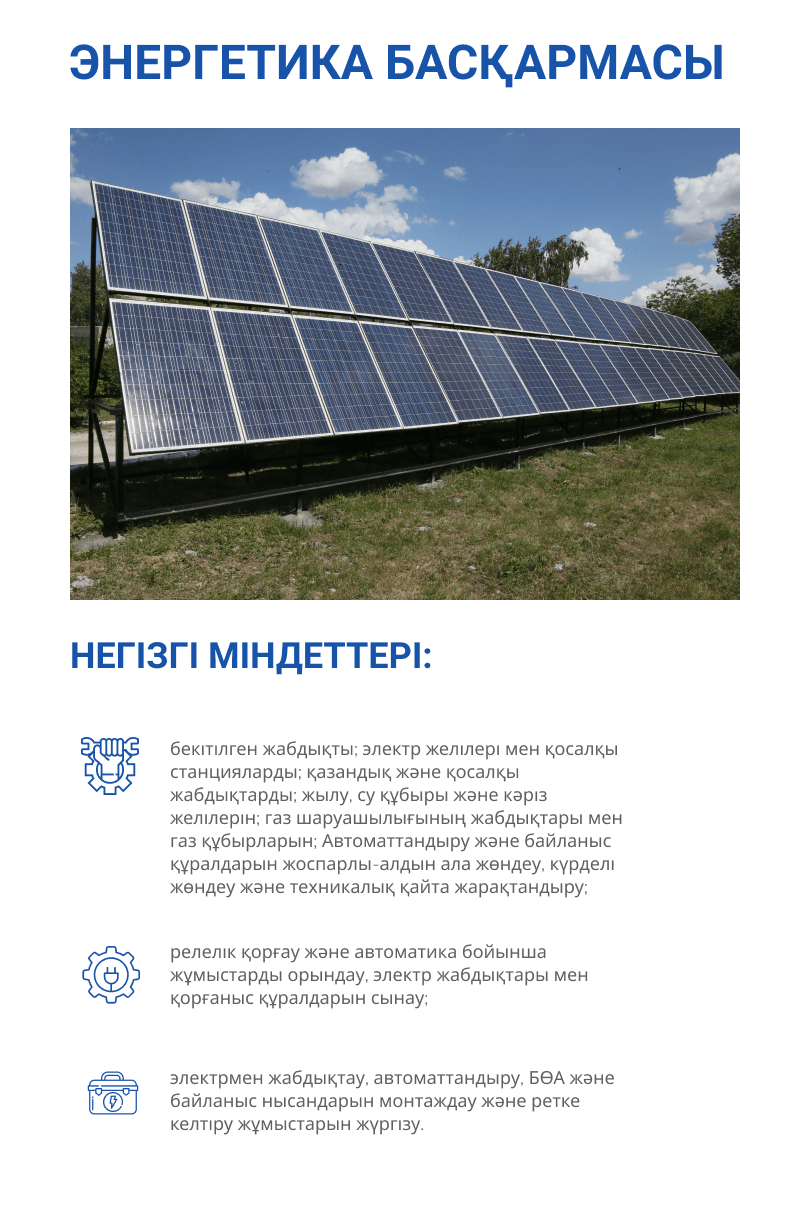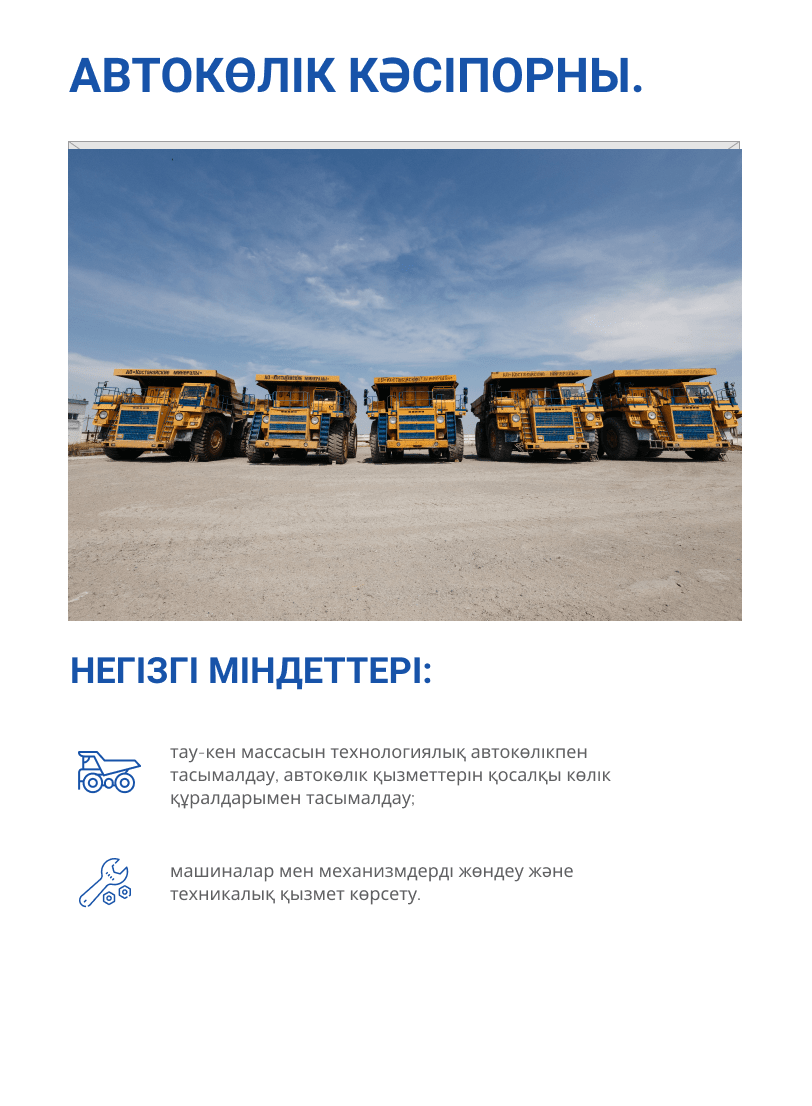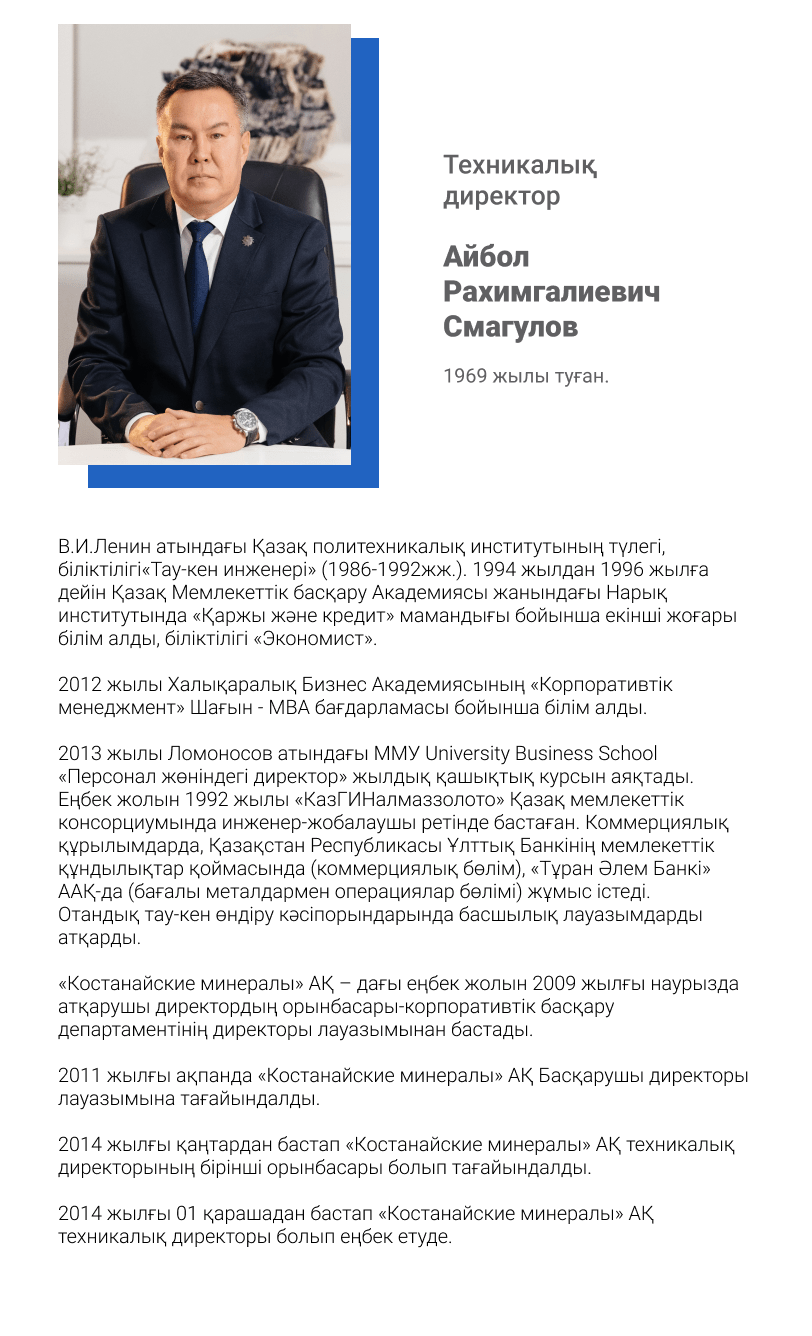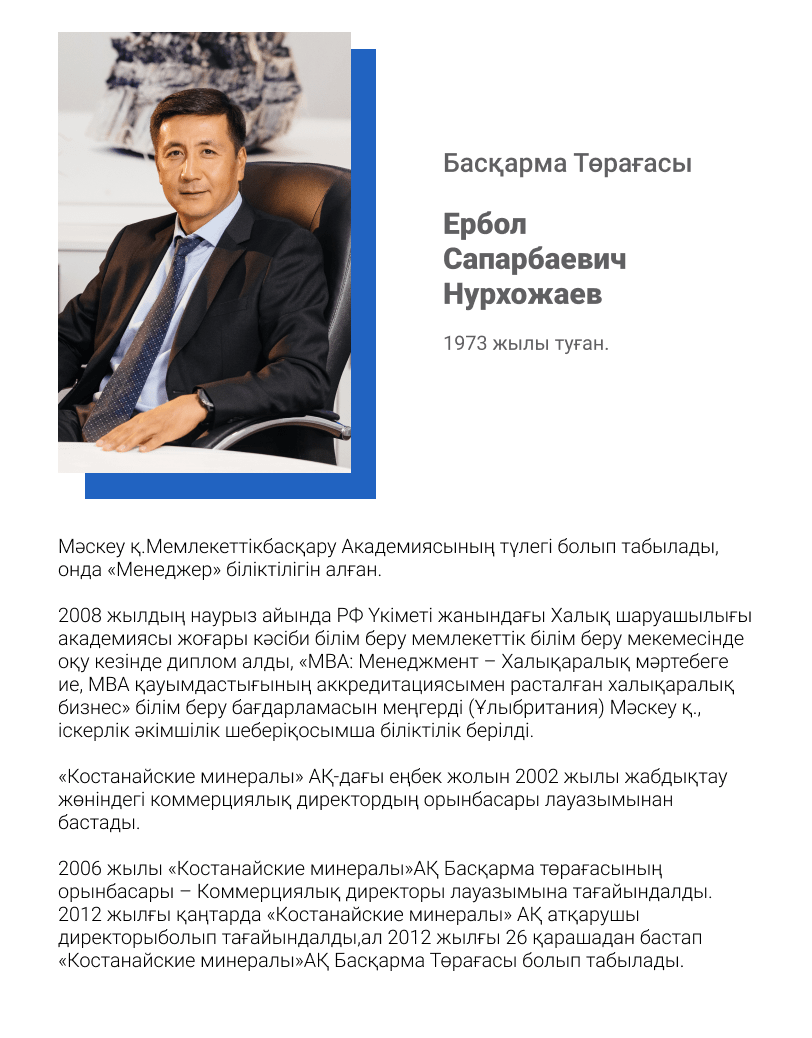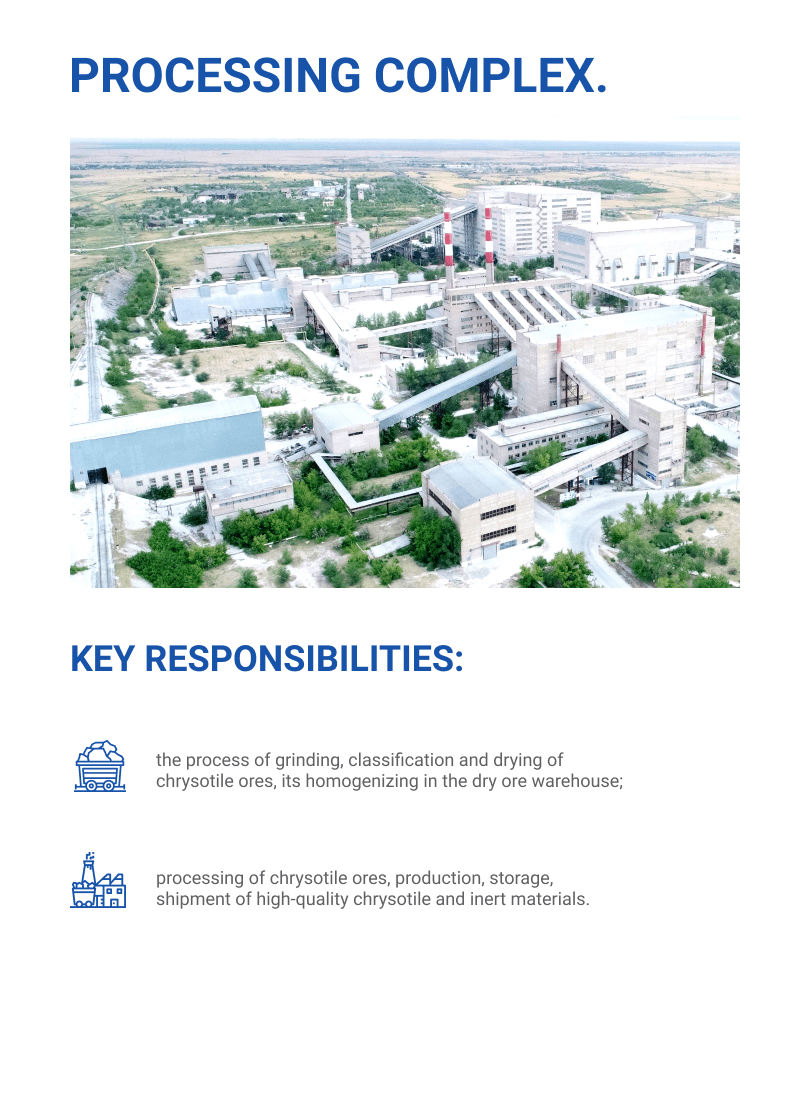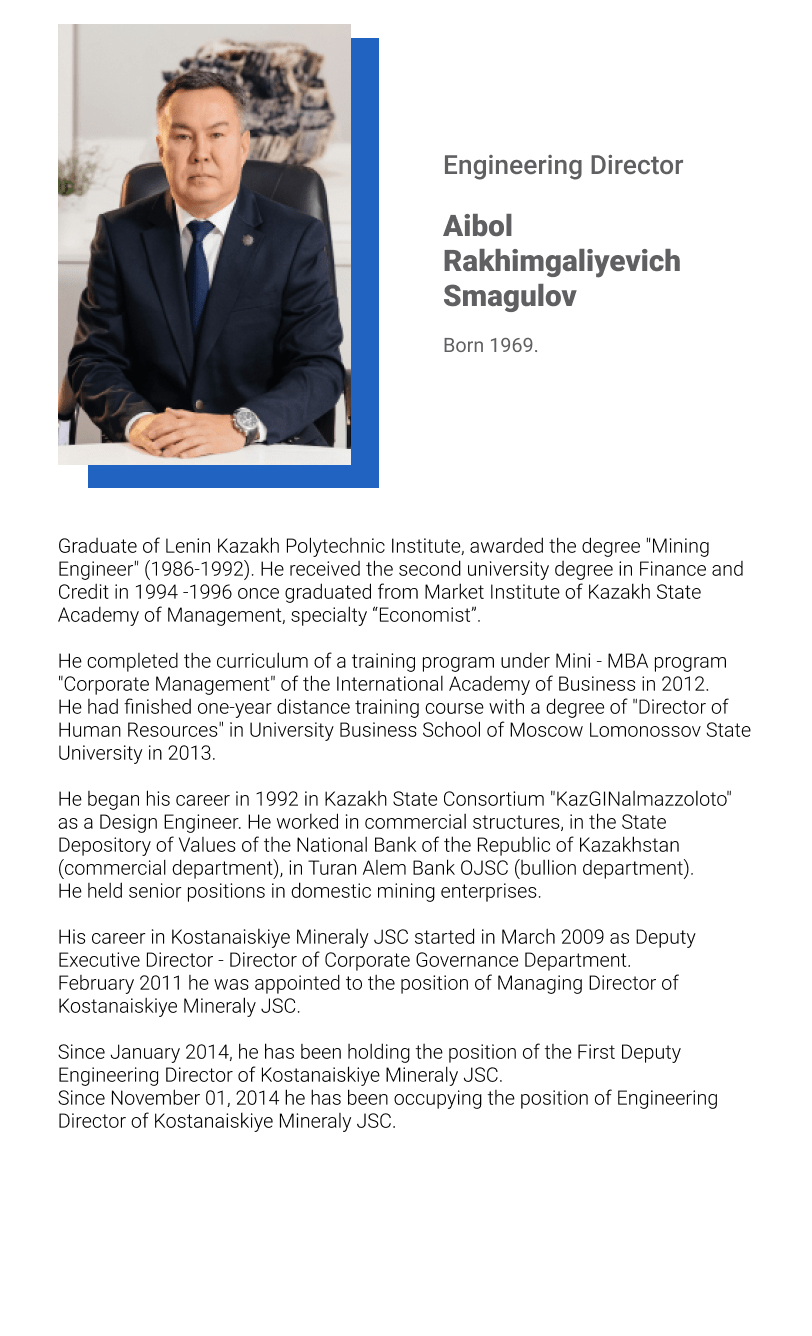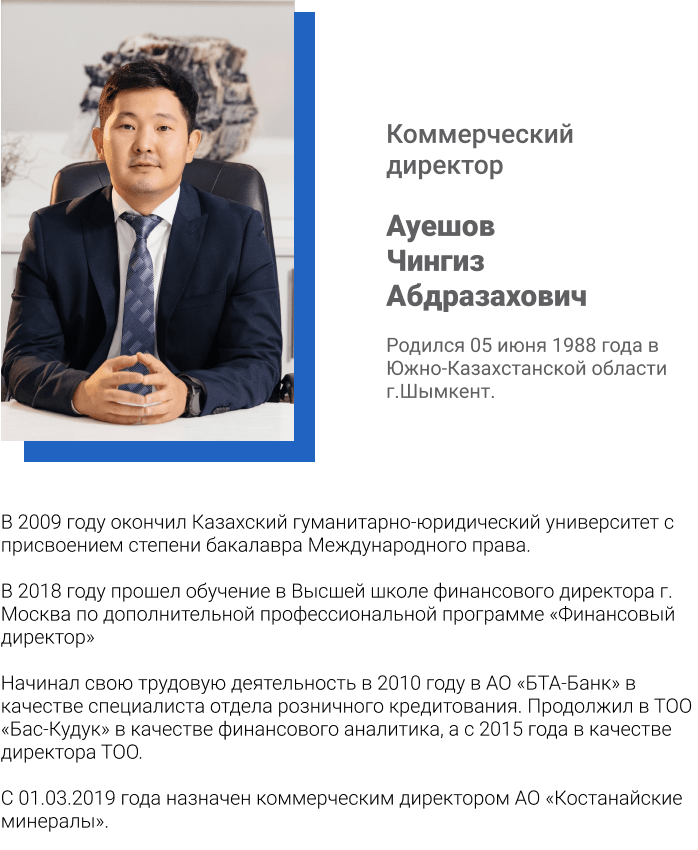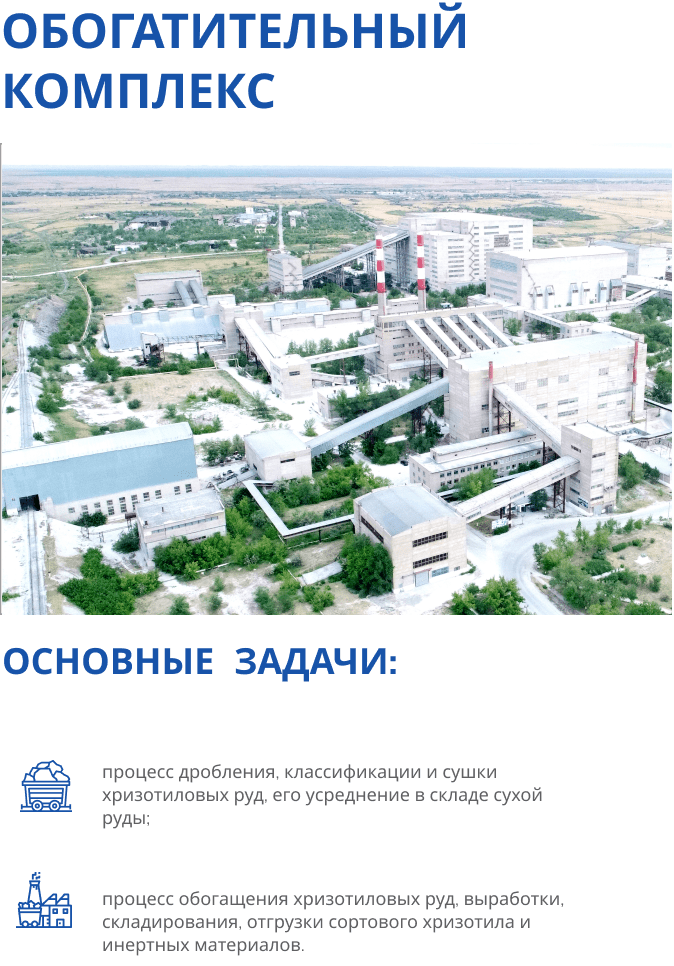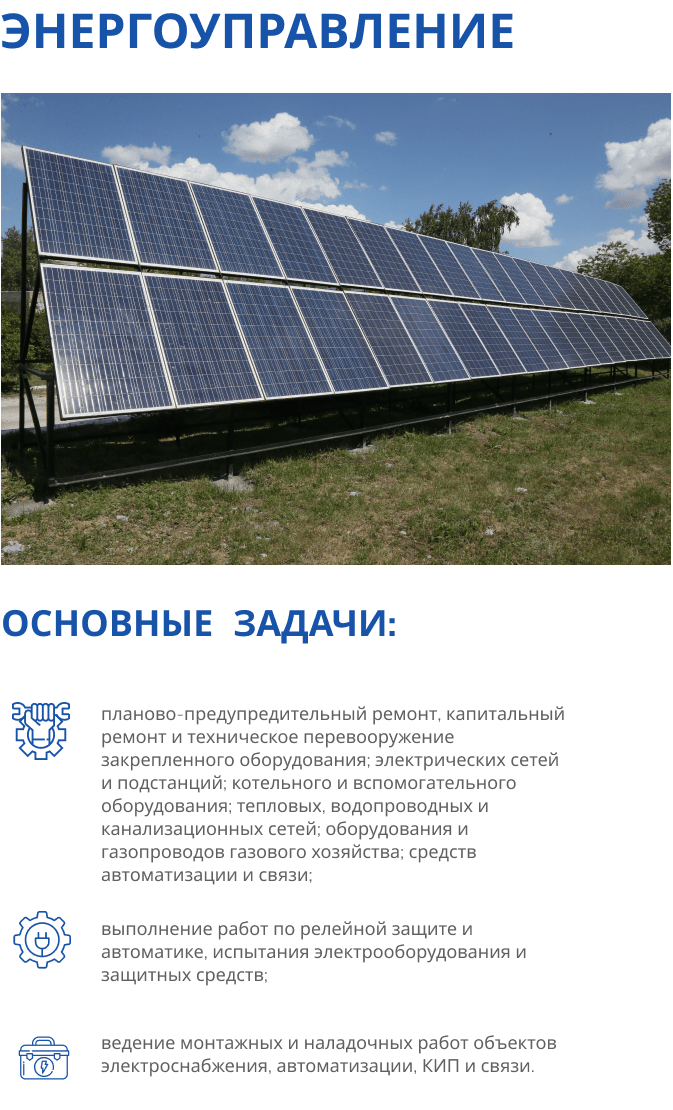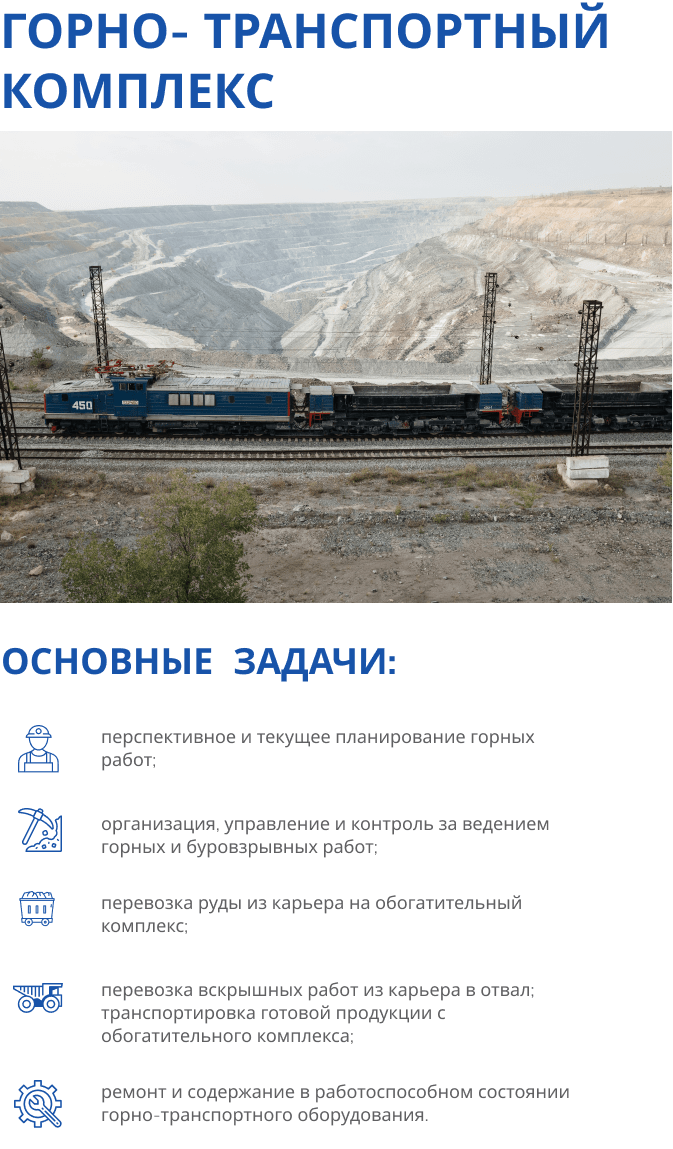Production
PRODUCTION
Chrysotile asbestos
Chrysotile asbestos or “white asbestos” is attributed to the group of natural minerals, commercially named as “asbestos”.
It is referred to serpentine group, and structurally belongs to layered silicates. Chrysotile asbestos has the formula 3MgO · 2SiO2 · 2H2O and the form of magnesium hydrosilicate, naturally occurring in crystallic form, consisting of hollow fibril tubes 2.6 · 10 2mm in diameter and up to 2 … 3 cm long. The mineral can be split into the finest chrysotile fibers, up to 0.5 microns thick.
Chrysotile of 3-6 groups corresponds to the requirements of the interstate standard GOST 12871-2013.
Chrysotile asbestos has some distinguished properties, that no other mineral or synthetic fiber has: it is stronger than steel, does not corrode, fireproof (thermally insulated) and non-conductive; it is cheaper than synthetic fibers such as polyvinyl acetate (PVAC); it requires less energy while being produced. Being economically and environmentally acceptable, while using it, strengthens any cement / polymer mixture, significantly increasing its wear resisting property. This material shows its efficiency to the highest degree.

Asbestos fibers are superior in tensile strength to steel wire; at the same time, due to its high adsorptive capacity, asbestos adheres well to hardening cement. Thus, asbestos-cement materials appeared to be rhather successful possessing the properties such as: light weight, durability, water-resistance and waterproofing, fire-resistance, rotproofness and non-corrosiveness.
The benefits of chrysotile asbestos have been demonstrated in residential, industrial and sanitary infrastructures. Chrysotile-based cement is used in the production of flat or corrugated sheets for residential construction, drinking water and sewage pipes, roof tiles, flooring, tiles, tanks, panels, etc.
The share of chrysotile cement occupies 85% to 90% of the chrysotile asbestos market, the rest falls in frictional materials, technical textiles, seals, specialized paper products, etc.
Thanks to its low cost, chrysotile asbestos is indispensable material while erecting infrastructures essential for the life of population of developing countries, and providing drinking water, sewage, roofing required for a healthy lifestyle.
The chrysotile industry produces more than 3,000 items of industrial goods by its natural properties.

Chrysotile is used in production of:
• roofing, wall products (asbestos-cement flat and corrugated sheets, foam concrete);
• pipes (chrysotile cement pressure and non-pressure pipes of various diameters);
• facing slabs;
• industrial asbestos and heat insulating products (fabrics, cords, cardboard, filters, frictional products, brake bands, paronite [5], etc.);
• protective concrete cover clamps for tunnel construction, sealing agents;
• rubber materials, bricks;
• mastics, sealing agents, lining compounds, organosilicate coatings, drilling and grouting solutions, asphalt concrete mixtures, in preparation of adhesive mixtures and putties, mortars, repair and restoration compounds.
This material is added in protective suits for representatives of hazardous responsibilities, for example, firefighters. Its fibers can also be found in specific paper products, including production of special asbestos cardboard, which is distinguished by its durability.
A lot of building materials have asbestos as their composition component, it is indespencible in production of slate and various pipes.
This mineral has also been is used to create brake pads, gaskets, clutches, discs and other spare parts in auto industry.
Asphalt production could be hardly useful without asbestos – it is used when laying the asphalt road.
Thanks to its low conducting power, asbestos ensures well protection against high temperatures, therefore, by using it, heat insulation of various heating devices is performed. In addition to industrial applications, asbestos products are often used as accessories for a fire show – an impressive show using fire (fireproof asbestos cloth).
The largest asbestos consumer is the asbestos-cement industry, running on more than 75% of chrysotile asbestos, extracted worldwide and traditionally used in the production of asbestos-cement products; products of this type of industry (pipes and sheets) contain 10-15% of asbestos (mainly chrysotile).

Last News
Semi-century success story of Kostanay Minerals JSC
One of the world’s largest chrysotile producers, Kostanay Minerals JSC, has been successfully operating for 55 years. During this time, the company has developed into a major world leader in the mining industry.
3D version of the industrial area ...
On their own, “KAEM” employees created an information 3D model of all buildings and structures of the industrial site of the Enterprise, using modern BIM technologies
American scientists: chrysotile asbestos will save the planet from global warming
Global warming is part of the most pressing agenda of our time. The UN calls for a massive reduction in CO2 emissions, a transition to green technologies and alternative energy sources.




